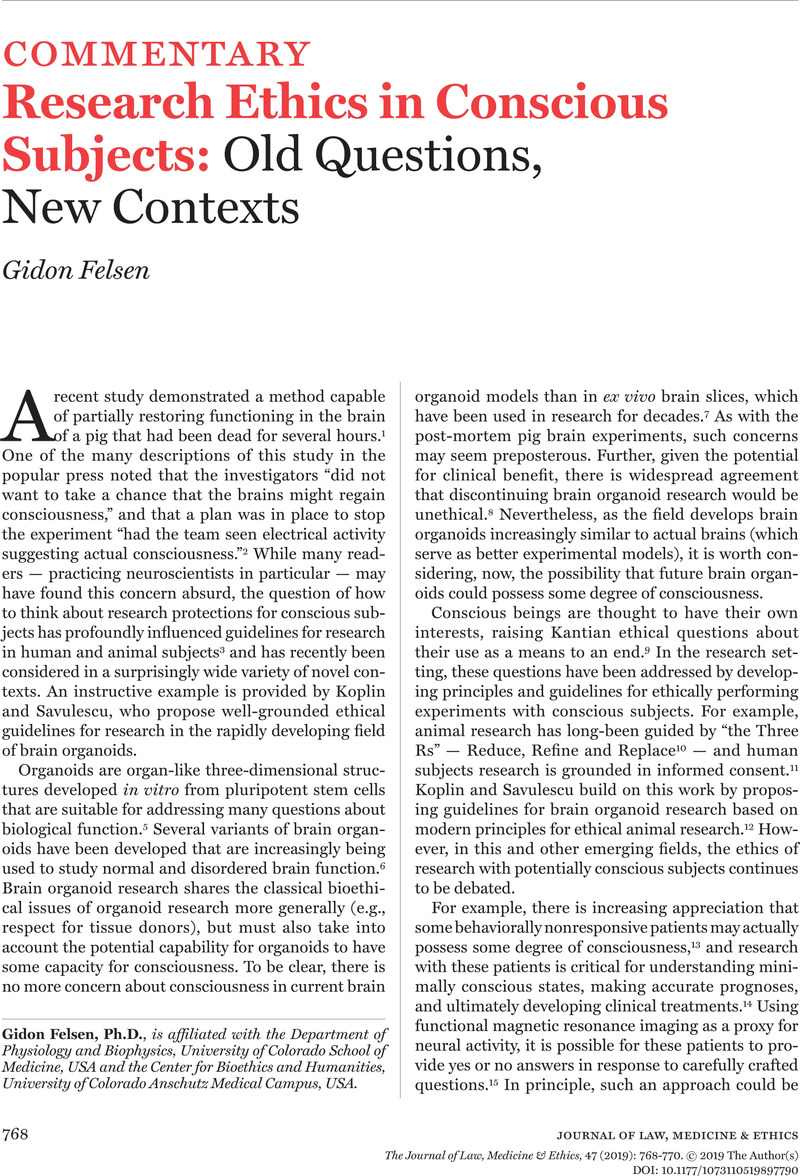Crossref Citations
This article has been cited by the following publications. This list is generated based on data provided by Crossref.
de Jongh, Dide
Massey, Emma K.
Berishvili, Ekaterine
Fonseca, Laura Mar
Lebreton, Fanny
Bellofatto, Kevin
Bignard, Juliette
Seissler, Jochen
Buerck, Leila Wolf-van
Honarpisheh, Mohsen
Zhang, Yichen
Lei, Yutian
Pehl, Monika
Follenzi, Antonia
Olgasi, Christina
Cucci, Alessia
Borsotti, Chiara
Assanelli, Simone
Piemonti, Lorenzo
Citro, Antonio
Pellegrini, Silvia
Pignatelli, Cataldo
Campo, Francesco
Thaunat, Olivier
Cronin, Antonia J.
Mey, Devi
Parisotto, Chiara
Rossi, Giovanna
Kugelmeier, Patrick
Wolint, Petra
Mühlemann, Markus
Pal-Kutas, Karolina
Cavallaro, Marco
Götz, Julia
Müller, Jeanette
and
Bunnik, Eline M.
2022.
Organoids: a systematic review of ethical issues.
Stem Cell Research & Therapy,
Vol. 13,
Issue. 1,





